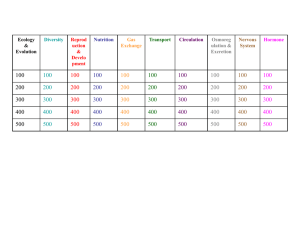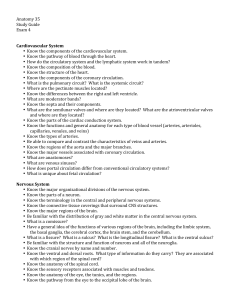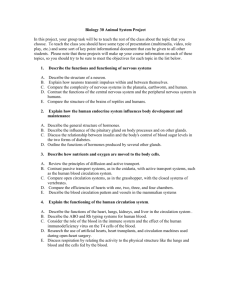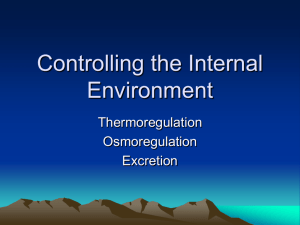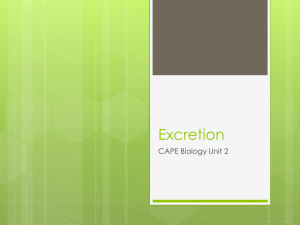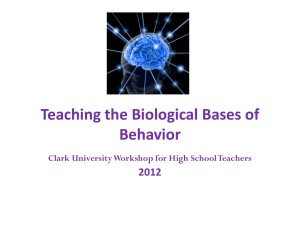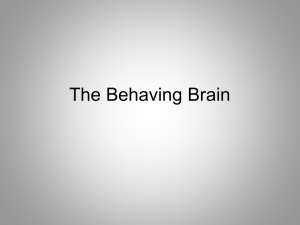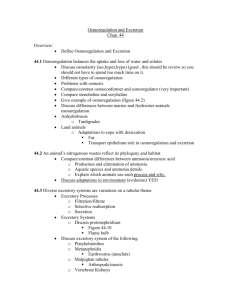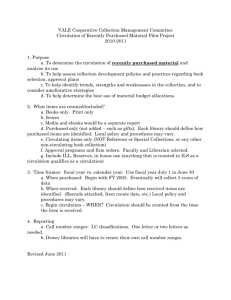BIOL 112 * COMPILED KEY CONCEPTS
advertisement
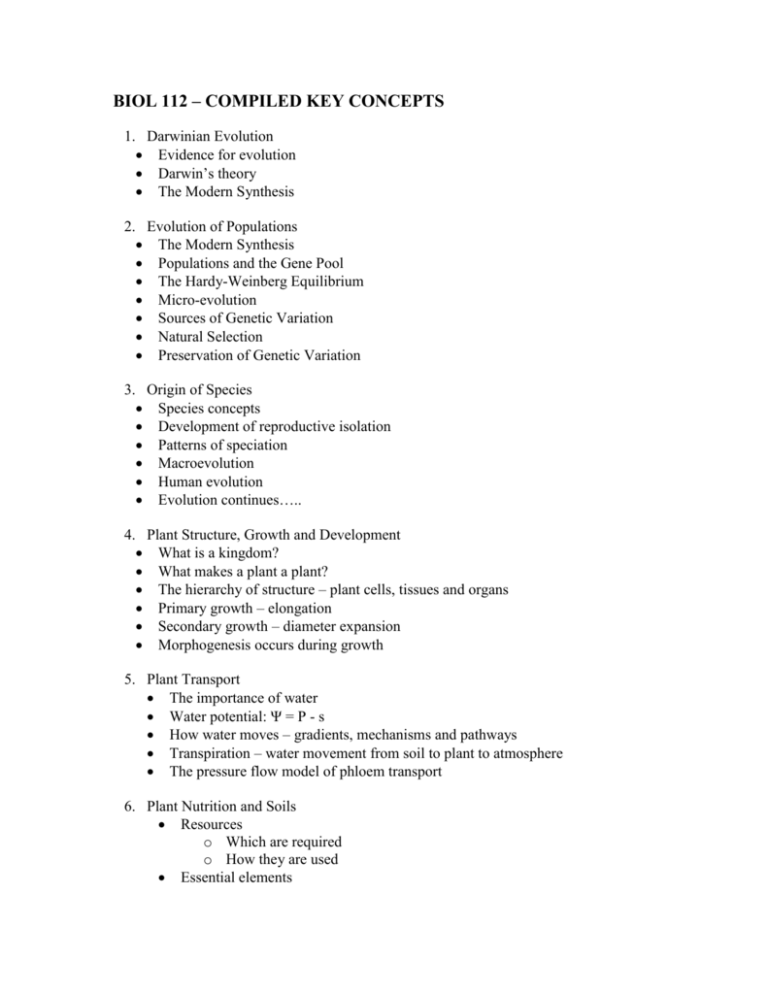
BIOL 112 – COMPILED KEY CONCEPTS 1. Darwinian Evolution Evidence for evolution Darwin’s theory The Modern Synthesis 2. Evolution of Populations The Modern Synthesis Populations and the Gene Pool The Hardy-Weinberg Equilibrium Micro-evolution Sources of Genetic Variation Natural Selection Preservation of Genetic Variation 3. Origin of Species Species concepts Development of reproductive isolation Patterns of speciation Macroevolution Human evolution Evolution continues….. 4. Plant Structure, Growth and Development What is a kingdom? What makes a plant a plant? The hierarchy of structure – plant cells, tissues and organs Primary growth – elongation Secondary growth – diameter expansion Morphogenesis occurs during growth 5. Plant Transport The importance of water Water potential: Ψ = P - s How water moves – gradients, mechanisms and pathways Transpiration – water movement from soil to plant to atmosphere The pressure flow model of phloem transport 6. Plant Nutrition and Soils Resources o Which are required o How they are used Essential elements o What they are o What they do Soils and soil forming factors The rhizosphere Some alternate methods to acquire nutrients 7. Angiosperm Reproduction Life Cycles – the alternation of generations The structure of a flower Development of the male gametophyte Pollination in all its glories Development of the female gametophyte Fertilization Embryos, seeds and fruit Asexual reproduction 8. Introduction to Animal Structure and Function What separates animals from other organisms? Introduction to structure and function relationships Exchanges with the external environment Hierarchical organization in animals Cells and tissues Organ systems Homeostasis and thermoregulation 9. Animal Nutrition and Digestion Animals are heterotrophic! Nutritional needs o Energy o Carbon skeletons o Essential nutrients Food processing The human digestive system 10. Animal Circulation and Gas Exchange Systems Circulation and gas exchange How we circulate – spanning diversity Hearts – the evolution of double circulation Blood circulation and capillary exchange Blood structure and function Gas exchange – spanning diversity Breathing – spanning diversity Respiratory pigments 11. Animal Osmoregulation Water and metabolic waste The osmotic challenges of different environments The sodium/potassium pump and ion channels Nitrogenous waste Osmoregulation and excretion in invertebrates Osmoregulation and excretion in vertebrates 12. Animal Immune Systems Innate immunity provides broad-spectrum defense against many pathogens Acquired immunity is very specific, develops over time, and relies on B and T cells Antigen recognition properties of B and T cells B and T cell binding sites develop randomly! Integrated B and T cell function When the immune system goes wrong… 13. Animal Nervous Systems Evolution of organization in nervous systems Neuron structure and function Neuron communication at synapses Organization of the vertebrate nervous systems Brain structure and function The cerebral cortex Nervous system injuries and diseases
